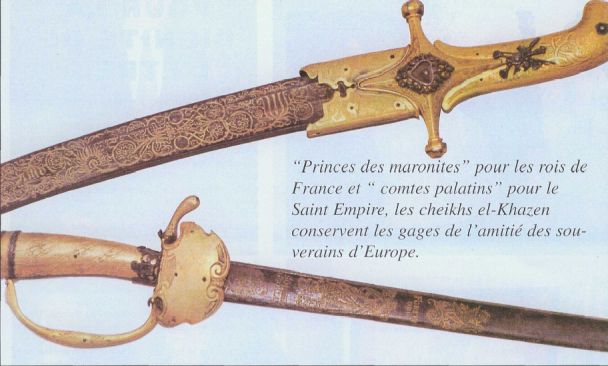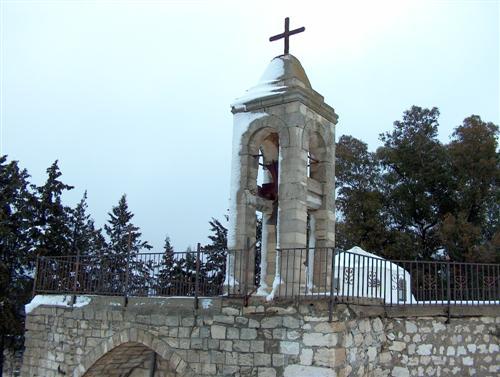Former Cuban leader Fidel Castro has died, his brother, Cuban
President Raul Castro, announced on state-run media. President Castro announced Fidel’s death in a
televised address. “At 10:29 in the night, the chief commander of the Cuban
revolution, Fidel Castro Ruz, died,” he said. “Ever onward, to victory.”
Castro had been in failing health for years, and was the subject
of death rumors for nearly as long. His cause of death was immediately unclear.
The Cuban revolutionary was born Fidel Alejandro Castro Ruz on
August 13, 1926, in the small eastern village of Biran. His
father was a wealthy sugarcane farmer; his mother worked as a
maid to his father’s first wife. Castro received a Roman Catholic education through high school.
He later excelled as an athlete and went on to law school at the
University of Havana, where he would find an interest in
politics.
A more radical bent soon emerged, as Castro plotted and executed
several attempts at overthrowing Cuban leaders and making an
attempt at a bid for Cuba’s House of Representatives. Following a
series of offensives, he seized power in 1959 from Cuban dictator
Fulgencio Batista. He did not look back.

Fidel
Castro.
JFK Library
Though he was admired by leftists worldwide, Castro was demonized
by the US and many of its allies. Castro moved quickly to nationalize businesses across the island,
moving away from the US and toward the Soviet Union. The US
officially cut all diplomatic ties with Cuba in January 1961.
To exiles who awaited Castro’s death, the Associated Press
reported, he embodied a heavy-handed regime that jailed political
opponents, suppressed civil liberties, and wrecked the island’s
economy. After decades of political and military tumult, the tide began to
shift in Cuba’s ruling class. Cuba’s insular policies began to thaw a bit in 1998, when Pope
John Paul II became the first pontiff to visit the nation. Pope
Benedict would follow more than a decade later. In 2003, Castro was confirmed as president for another five-year
term. Then in the waning years of his rule, Castro oversaw
several initiatives that led to a major crackdown on independent
journalists, dissidents and activists, and a strengthening of
ties with Venezuela. The Bolivarian Alternative for the Americas was birthed from
that, in which Cuba sent health professionals to Venezuela in
return for discounted oil.
Cuban
leader Fidel Castro looks out over a 3,000 stong crowd that
screaming “Fidel, Fidel,” in a concert hall were left-wing groups
were holding a rally against the UN summit for Social Development
in Copenhagen.
Reuters/FOR
P-BASE- FILE PH0TO
By 2006, Castro handed provisional control of Cuba to his
brother, Raul, while Fidel reportedly recovered from a major
intestinal surgery. That was the first time he surrendered
control of his power in 47 years.
He did not return.
In 2008, when the National Assembly prepared to reconfirm Fidel
as Cuba’s leader, he
declined in a letter.
At that point, he hadn’t been seen publicly for nearly two years.
The letter was posted to the Communist Party’s website
Granma, in which Castro said, “I do not bid you
farewell. My only wish is to fight as a soldier of ideas.”
Castro made several more public appearances in 2010, but
officially stepped down from the Communist Party of Cuba in 2011,
leaving the younger Raul Castro to introduce possibly the most
significant change in Cuba since the 1960s, announcing a
deal with the Obama administration to reinstate diplomatic ties
with the US in 2014.
People flooded the streets in Miami celebrating the death of Fidel Castro
People flooded the streets of Miami early Saturday morning after
the
death of former Cuban leader Fidel Castro was announced.
In an interview with NBC Miami, Rep. Ileana Ros-Lehtinen of
Florida called it “an opportunity to begin a new chapter of
freedom and democracy,” noting that people in Cuba would not be
allowed to openly show such emotion.
Cars lined the streets in nearby Hialeah, Florida, where people
celebrated while waving Cuban flags, honking horns, and banging
pots and pans.
Some people raised champagne glasses to toast Castro’s passing.
Others shouted chants of “libertad” — Spanish for freedom.
How Fidel Castro rose to power and ruled Cuba for 5 decades
Fidel Castro died
at age 90 on Friday night.
Whether or not you agreed with Fidel Castro’s politics, he
had an impressive rise to power.
Castro was responsible for
establishing the first Communist state in the western hemisphere,
beginning what would become a nearly five-decade reign as leader
of Cuba, not far from US shores.
Castro was born Fidel Alejandro Castro Ruz on August 13,
1926 in the small eastern village of Biran. His father was a
wealthy sugarcane farmer; his mother worked as a maid to his
father’s first wife.
Fidel’s father reportedly would not recognize him as his own son
until Fidel turned 17, when his father ditched his first wife and
married the maid.
Castro received a Roman Catholic education through high
school. He later excelled as an athlete and went on to law school
at the University of Havana, where he would find an interest in
politics.
A more radical bent would soon emerge, when Castro joined
an anti-corruption Orthodox Party movement
in 1947
that tried and failed to overthrow
Dominican Republic dictator, Rafael Trujillo.
Castro graduated college in 1950, and opened a law office.
Two years later, he launched a bid for Cuba’s House of
Representatives, but the election never happened. Cuban dictator,
Fulgencio Batista squashed it after staging a coup and seizing
power in March 1952.
From there, Castro would discard any further attempts at
legitimate party politics,
launching his own offensive
with more than
100 men who stormed the Moncada army barracks in 1953.
“
From that moment on, I had a clear idea of the
struggle ahead,
” Castro said in a 2006 book, My
Life: A Spoken Autobiography.
That attack failed, many of the men died, and Castro was
sentenced to 15 years in prison.
Batista ordered Castro released from prison in 1955, after
which, Castro ended up in Mexico, where he would plan another
coup attempt. The next year, Castro, plus 81 men including
Ernesto “Che” Guevara, and Fidel’s brother, Raul sailed to
the eastern coast of Cuba. They were ambushed. The Castro
brothers and Guevara fled into the country’s southeastern
mountains.

AP Photo
COUP d’ÉTAT
Following a series of offensives between 1957 and 1959,
Castro would seize control from Batista in January that year, and
solidify his power grab in July.
Early on, Castro gained the support of many Cuban citizens
with promises to restore political and civil liberties. But
later, Castro began to take a more radical tone, nationalizing
American businesses on the island, and further angering the US
with an increasingly anti-American rhetoric, and aligning with
the Soviet Union in a 1960 trade deal.
The US officially cut all diplomatic ties with Cuba in
January 1961.
By April that year, the US government armed about 1,500
Cuban exiles to try and overthrow the regime at the Bay of Pigs.
It failed. Cuba and the Soviet Union later strengthened their
partnership.
In 1962, the Soviet Union began secretly placing ballistic
missiles in Cuba that were capable of firing nuclear weapons into
American cities. That ushered in the Cuban missile crisis. Both
the US and Soviet Union later stood down when the former agreed
to remove its missiles stationed in Turkey and the Soviet Union
removed its weapons from Cuba.
Meanwhile, Castro instituted a one-party government,
gaining control over all aspects of Cuban life. While that drove
away many of Cuba’s upper and middle class citizens, Castro
expanded the country’s social and educational services, free of
charge, to all economic classes.
Castro’s economic power was further concentrated, but that
didn’t bode well for the Cuban economy, which failed to gain
momentum. The country became increasingly dependent on Soviet
policies while, at the same time, enduring the squeeze of a
United States trade embargo.
1976 — Cuba created the National Assembly, Castro became
president of that body’s State Council.
1980s — Castro was recognized as one of the prime rulers
of unaligned nations. And while the country still had strong ties
to the Soviet Union, Castro regularly hinted his willingness to
restore diplomatic ties with the US if the US ended the trade
embargo.
The Castro regime later released some 125,000 immigrants to
the US, which overwhelmed America’s immigration
officials.

AP Photo
STANDING BY THE SOVIET UNION
Later in the 1980s, Castro held his ground on the strict
tenets of Communism, even as Mikhail Gorbachev began employing
democratic reforms that allowed some countries to break ties with
the Soviet bloc.
1991 — in response to the Soviet Union’s collapse, and the
loss of subsidies from the regime, Castro tried to stem his
country’s subsequent economic decline by implementing some
free-market policies. It was a tempered move; Castro still
maintained tight control over life in Cuba.
1993 — the tide began to shift when Castro’s daughter,
Alina Fernandez Revuelta, went to the US to seek asylum. She
then
publicly denounced
her father and his
regime’s policies.
The next year, Cuba saw its largest anti-Castro uprising in 35
years, leading to another large release of people – more than
30,000 –
sent to the US on makeshift boats and rafts. It’s been
called Cuba’s largest exodus since the “freedom flotilla” of
1980.

AP Photo/Ismael Francisco,
Cubadebate
DIMINISHING DICTATORSHIP
Cuba’s insular policies began to thaw a bit in 1998,
when Pope John Paul II became the first pontiff to
visit the nation. Pope Benedict would follow more than a decade
later.
2003 — Castro was confirmed as
president for another 5-year term. Now in the waning years of his
rule, Castro oversaw several initiatives that led to a major
crackdown on independent journalists, dissidents and activists,
and a strengthening of ties with Venezuela. The Bolivarian
Alternative for the Americas was birthed from that, in which Cuba
sent health professionals to Venezuela in return for discounted
oil.
2006 — Castro handed provisional control of Cuba to his
brother, Raul, while Fidel reportedly recovered from a major
intestinal surgery. That was the first time he surrendered
control of his power in 47 years.
He would not return.
In 2008, when the National Assembly prepared to reconfirm
Fidel as Cuba’s leader,
he declined in a letter
. At that point, he
hadn’t been seen publicly for nearly two years. The letter was
posted to the Communist Party’s website,
Granma
, in which Castro said, “I do not bid you
farewell. My only wish is to fight as a soldier of ideas.”
Castro would make several more public appearances in 2010,
but officially stepped down from the Communist Party of Cuba in
2011, leaving the younger Raul Castro to introduce possibly the
most significant change in Cuba since the 1960s, reaching a deal
with the Obama administration to reinstate diplomatic ties with
the US.





